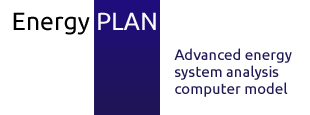Combined Heat and Power production (CHP) are essential for implementation of the climate change response objectives in many countries. In an introduction period, small CHP plants have typically been offered fixed electricity prices, but in many countries, such pricing conditions are now being replaced by spot market prices. Consequently, new methodologies and tools for the optimisation of small CHP plant designs are needed.
The small CHP plants in Denmark are already experienced in optimising their electricity production against the triple tariff, which has existed for almost 10 years. Consequently, the CHP plants have long term experience in organising when to switch on and off the CHP units in order to optimise their profit. Also, the CHP owners have long term experience in designing their plants. For instance, small CHP plants in Denmark have usually invested in excess capacity on the CHP units in combination with heat storage capacity. Thereby, the plants have increased their performance in order to optimise revenues.
This paper presents the Danish experience with methodologies and software tools, which have been used to design investment and operation strategies for almost all small CHP plants in Denmark during the decade of the triple tariff. Moreover, the changes in such methodologies and tools in order to optimise performance in a market with fluctuating electricity prices are presented and discussed.




